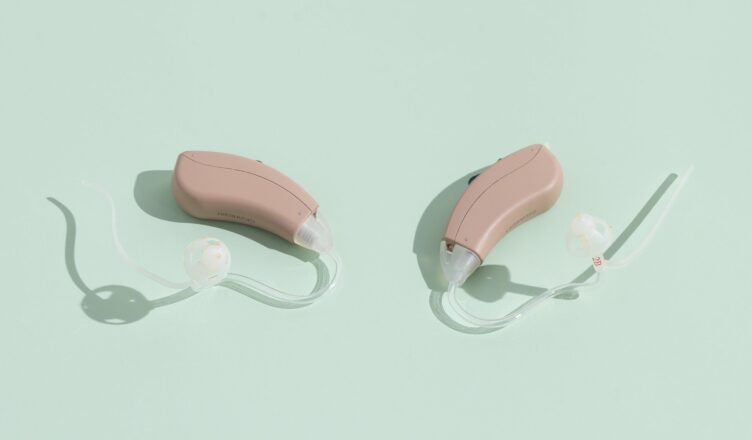Hearing aids have revolutionized how people with hearing loss experience the world around them, restoring the joys of conversation, music, and everyday sounds. However, there’s a delicate balance to strike when it comes to amplifying sounds and ensuring hearing safety, especially in noisy environments. This is where the intersection of hearing aids and hearing protection becomes crucial. This article explores the importance of finding the proper equilibrium between sound amplification and hearing safety and how modern technology addresses this challenge.
The Duality of Hearing Needs:
Individuals with hearing loss often face a unique challenge. On the one hand, they require assistance hearing and understanding conversations and other important sounds. On the other hand, they need protection from loud and potentially damaging sounds that could worsen their hearing loss or cause additional harm. Striking the right balance between these needs is essential for optimal hearing health.
Hearing Aids: Sound Amplification and Clarity:
Hearing aids are designed to amplify sounds, making them more audible for individuals with hearing loss. They achieve this through advanced technology that processes incoming sounds, enhances speech frequencies, and delivers the amplified sound to the user’s ears. This amplification is particularly valuable when clear communication, such as conversations, lectures, and social interactions, is vital.
Hearing Protection: Preserving Hearing Health:
On the other hand, hearing protection aims to shield the ears from loud and potentially damaging noises. Prolonged exposure to high-decibel sounds can damage permanent hearing or exacerbate existing hearing loss. Proper hearing protection is crucial for maintaining hearing health in noisy environments like construction sites, concerts, or even recreational shooting ranges.
Balancing Act: Hearing Aids and Hearing Protection:
The challenge lies in balancing the benefits of hearing aids’ sound amplification with the imperative of protecting the ears from harmful noise levels. While hearing aids can enhance the clarity of speech and ambient sounds, they can also amplify loud and detrimental noises if not correctly calibrated.
Modern Solutions:
Advancements in hearing aid technology have paved the way for innovative solutions that address this balance:
- Automatic Sound Management: Many modern hearing aids feature automatic sound management capabilities. These hearing aids can detect sudden increases in noise levels and instantly reduce the amplification to prevent the user from being exposed to harmful sounds.
- Noise Reduction Algorithms: Hearing aids have noise reduction algorithms that prioritize speech frequencies while suppressing background noise. This not only enhances speech clarity but also reduces the overall auditory workload.
- Directional Microphones: Some hearing aids have directional microphones that focus on sounds from specific directions. This is particularly useful when the user wants to amplify speech while minimizing background noise.
- Volume Limiting: Certain hearing aids come with volume-limiting options, ensuring that sounds are never amplified to levels that could cause damage.
- Hearing Protection Accessories: Some hearing aids are compatible with additional accessories designed specifically for hearing protection. These accessories provide an extra layer of defence in noisy environments.
Personalization and Consultation:
Every individual’s hearing needs and preferences are unique. Consulting with an audiologist is essential to finding the right balance between sound amplification and hearing protection. Audiologists can assess the degree of hearing loss, lifestyle factors, and the types of environments the individual frequents. Based on this information, they can recommend hearing aids that enhance sound while safeguarding against potential harm.
Situational Awareness and Switchable Modes:
Another notable advancement is the development of hearing aids with switchable modes. Users can switch between different modes optimized for various situations. For instance, a “quiet mode” might emphasize speech frequencies in calm settings, while a “noisy environment mode” could employ noise reduction algorithms to minimize background noise.
Customization and Fine-Tuning:
Modern hearing aids offer customization options that allow users to adjust settings according to their preferences. With the guidance of an audiologist, users can fine-tune their hearing aids to strike the ideal balance between sound amplification and hearing protection.
Educational Initiatives:
Raising awareness about balancing sound amplification and hearing protection is essential for individuals with hearing loss. Audiologists can play a pivotal role in educating users about the risks of excessive noise exposure and how to manage their hearing aids in various environments.
Conclusion: A Harmonious Blend of Hearing Enhancement and Safety: Hearing aids and protection are not mutually exclusive but essential to optimal hearing health. The key lies in harnessing the power of advanced hearing aid technology to strike a harmonious balance between amplifying sounds for enhanced communication and safeguarding against the potential dangers of noise-induced hearing damage. With proper consultation, personalization, and education, individuals with hearing loss can confidently navigate a world filled with diverse auditory experiences, enjoying clear communication and hearing protection.

